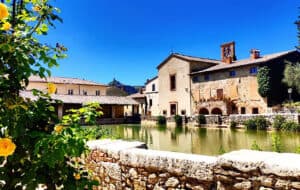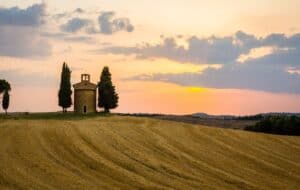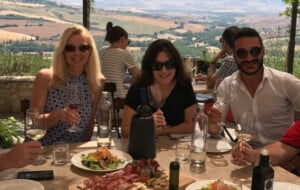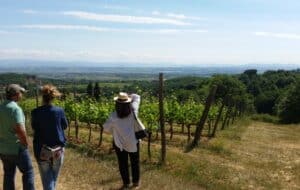Not far from the majestic and very famous circles of cypress trees, let the gentle winding Tuscan roads lead you up to San Quirico: a charmingly bright village elegantly sitting upon the top of the hill which separates the Val d’Orcia from the Val d’Asso, just 15 minutes from Montalcino or Pienza by car.
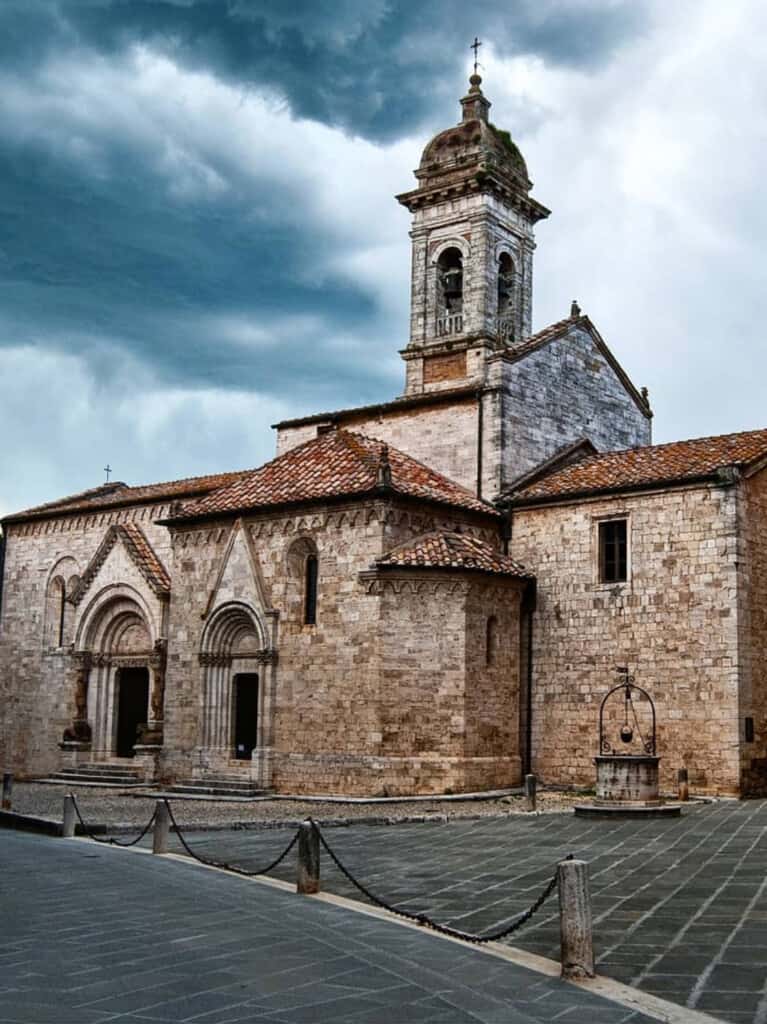
Less busy compared to those villages, San Quirico preserves the charm of local Tuscan life and is always worth a stop during your Tuscan wandering. This is an often overlooked precious gem of a thriving community. Strategically located on the Via Francigena, San Quirico has been touched by notable travellers and peoples of many eras who have left their mark.
Traces of Etruscan life remain from long ago while the medieval city plan still remains with various visible Romanesque and Gothic accents as you may note at the Collegiata Church.
Next Palazzo Chigi, which was officially re-inaugurated only in 2009 after a lengthy complete restoration from the severe damage it suffered over the years, especially during World War II.
A good part of the town walls and its fourteen watchtowers are still visible although some meld into existing structures: the best is seen at the eastern entrance gate in all of its original magnificence.
As you explore this hilltop town, take a stroll through its excellent example of an Italian garden at the Horti Leonini, a must-see if you love gardens. Also not to miss are San Francesco Church in the main square with its Madonna by Andrea della Robbia, the quaint little Romanesque style Santa Maria Assunta Church and the Ospedale della Scala just opposite from where pilgrims lay their heads before continuing on their journey to Rome.
Festivals
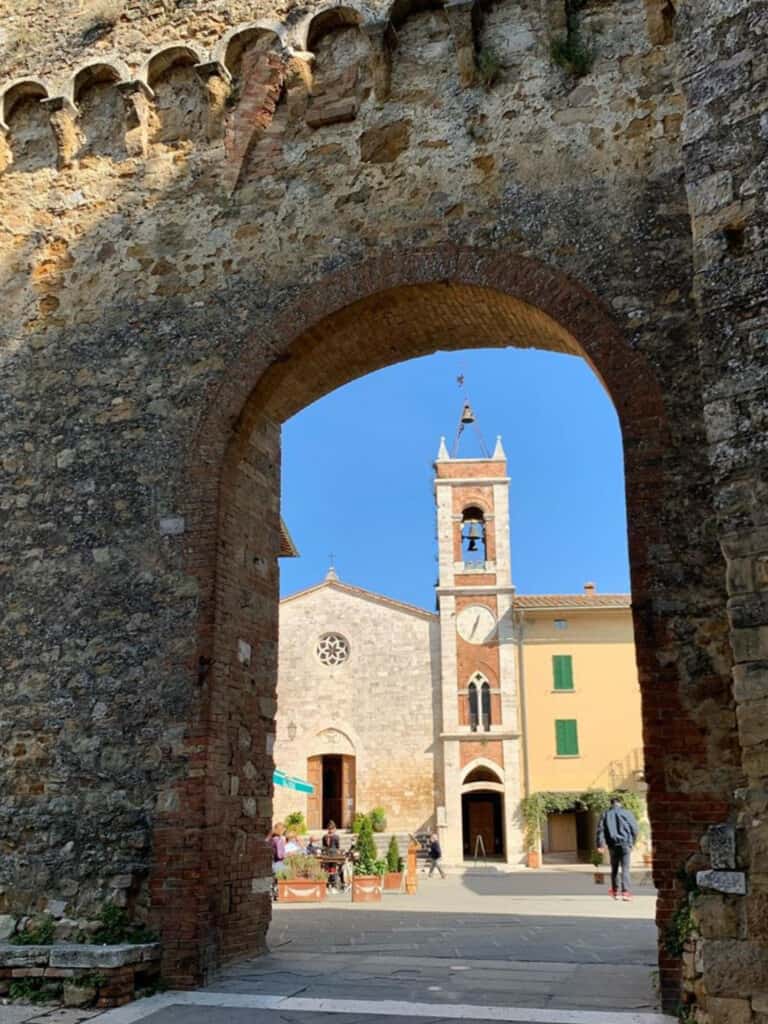
San Quirico is a popular destination for locals at the end of the “raccolta”, the olive harvest, for the Festa dell’Olio. On December 8th, so many different freshly pressed extra-virgin olive oils, presented by the olive oil producers, can be tasted in the town centre at no charge.
If you are in Tuscany on the third weekend in June, join in the merriment and festivities with the townsfolk as they commemorate Frederick I Barbarossa’s historic visit to San Quirico d’Orcia before being named Holy Roman Emperor in 1155. The four quarters challenge each other to flag and archery competitions in the Festa del Barbarossa.
Bagno Vignoni, the Hot Springs of the Val d’Orcia
Bagno Vignoni, part of the Municipality of San Quirico, is a wonderful ancient hot spring center of Roman and Etruscan origin dedicated to the worship of water. Probably more famous than its mother village Vignoni, Bagno Vignoni attracts thousands of visitors who are fascinated by the thermal pool that is the main square every year. This is fed with water that gushes from below at 52°C and is beneficial in the treatment of rheumatism, skin disease, and bone fractures.
In the Middle Ages, Bagno Vignoni was frequented by illustrious personalities who came for treatments with its beneficial waters. For example, the portico and chapel facing the main pool are actually dedicated to Saint Catherine of Siena who sojourned here between 1362 and 1367. Even Lorenzo il Magnifico de Medici and his court spent long periods of time in Bagno Vignoni. More recently in 1983, the great Russian director, Andrei Tarkovsky, filmed his masterpiece “Nostalghia” among the magic steam and soft light of Bagno Vignoni.
Nowadays you can spend a relaxing week by one of the three beautiful hotels in town which all have natural spa water in their private pools or you can just come here for lunch under the pergola at one of the good trattorias.
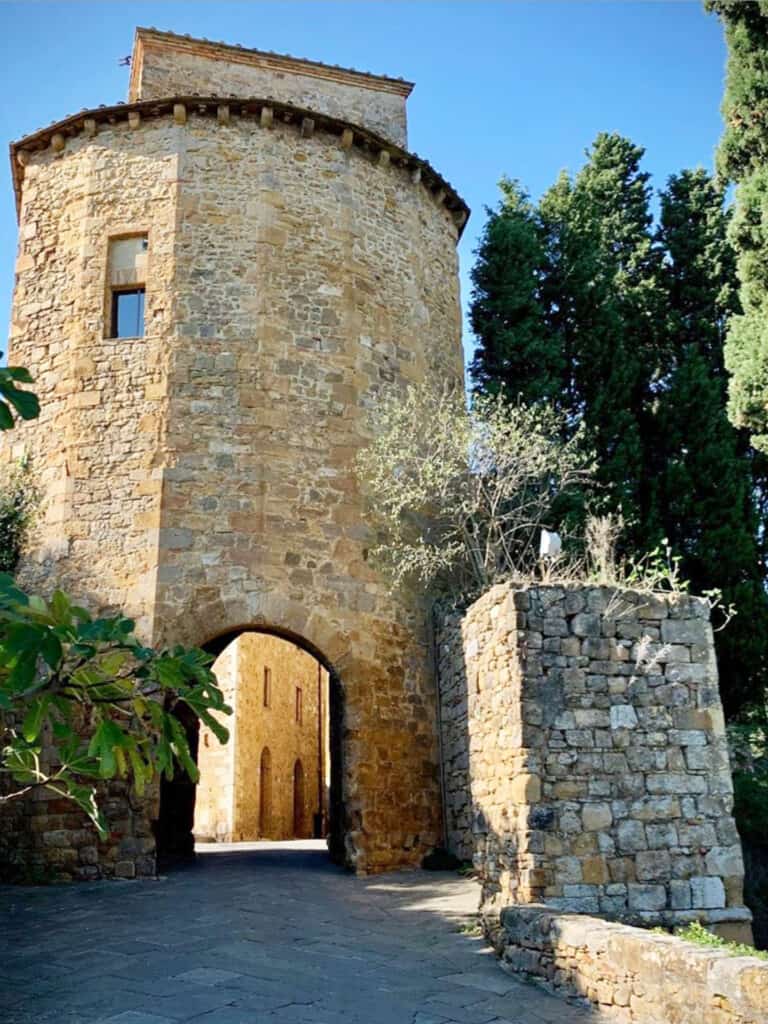
Many locals come to Bagno Vignoni in the late afternoon when the day- tourists have left to sip on an aperitif and dip their feet in one of the numerous channels that bring the thermal water towards the river.
Bagno Vignoni was also an important milling town for the Val d’Orcia: there are four mills carved in the rock on a slope that descends to a cliff over the Orcia River affording a breathtaking view over the entire valley. Until the end of the1950s, these mills used the water from the hot springs to turn the grindstone and crush the grain. In 1997, a project by the town council and financed by the European Community recuperated the area transforming it into the Mill Park.
If you face the valley above the waterfall, it is easy to see the thousands of acres of grains cultivated in small plots in the Val d’Orcia valley below and understand the strategic position Bagno Vignoni had in the past. Nowadays, the mills are all down there, many on the farms themselves, and several are open to visitors.
Vignoni
If you like the idea of a nice easy walk along dirt roads (in the summer it might be better to avoid the hottest time of the day), the road that leads from San Quirico to Bagno Vignoni is an unusual but very nice option.
Along this path, you will pass through Vignoni, a hamlet of San Quirico d’Orcia. The castle, which originally belonged to the Abbey of Sant’Antimo in the year 1000, afforded a dominating view over the Val d’Orcia.
Over the years, it changed hands several times and was eventually destroyed. What remains of this once noble castle is a Romanesque church and a watchtower that was rebuilt after some time and ended up in the property of the Chigi family. Breathe in the view of the Tuscan countryside from this vantage point.
